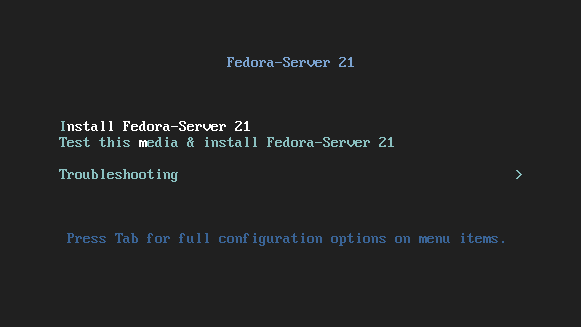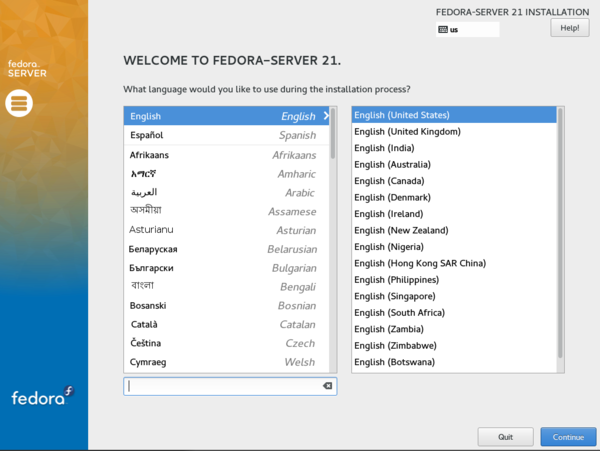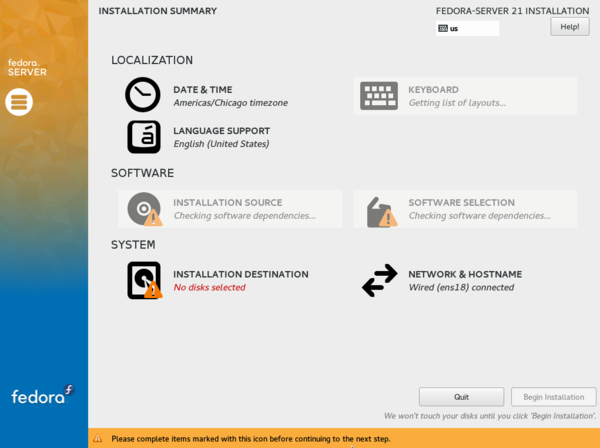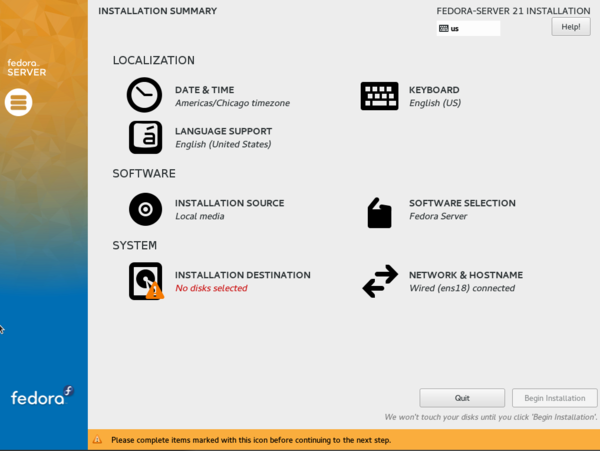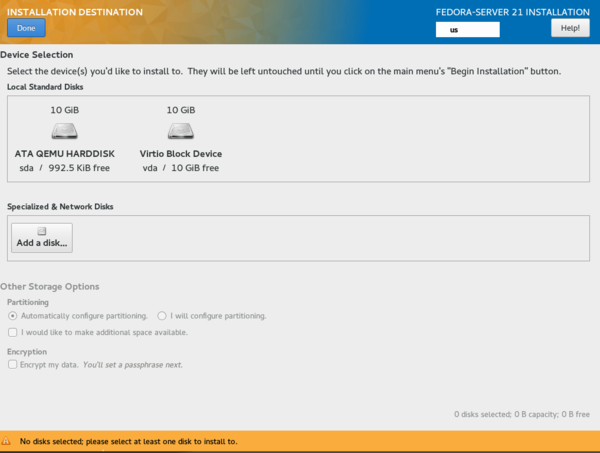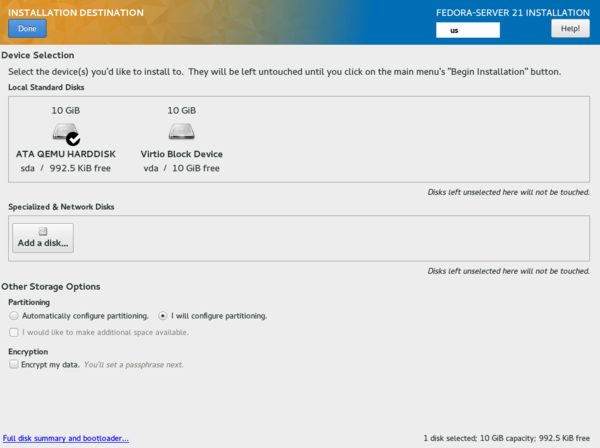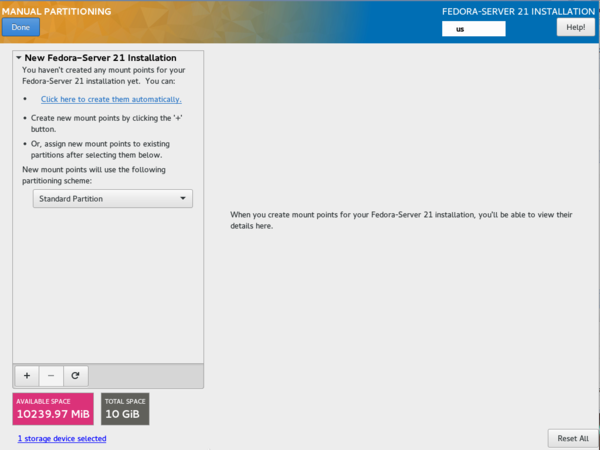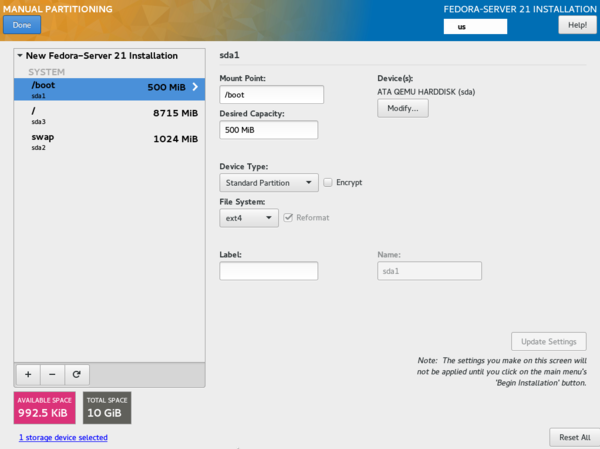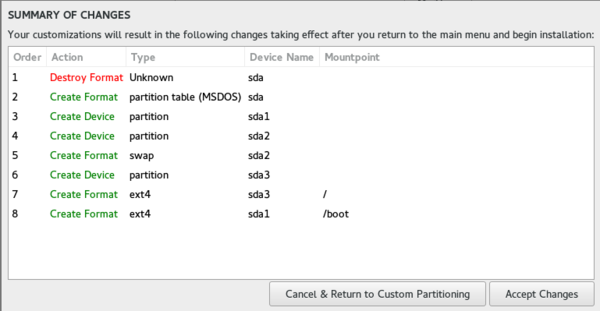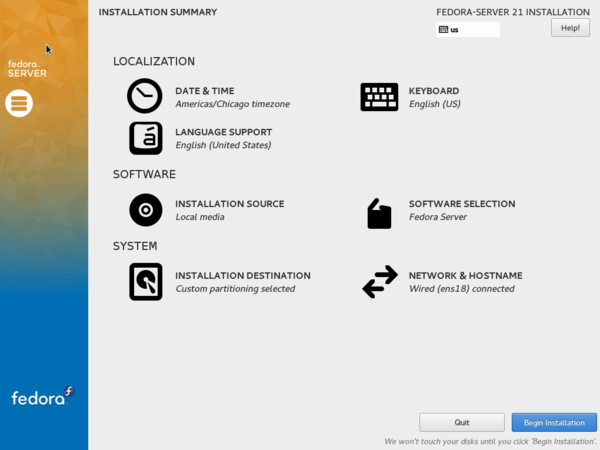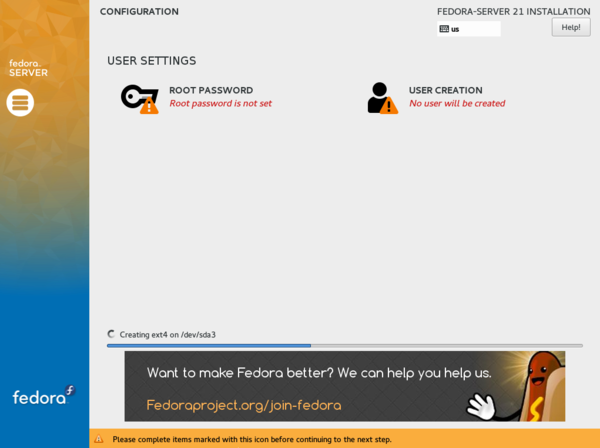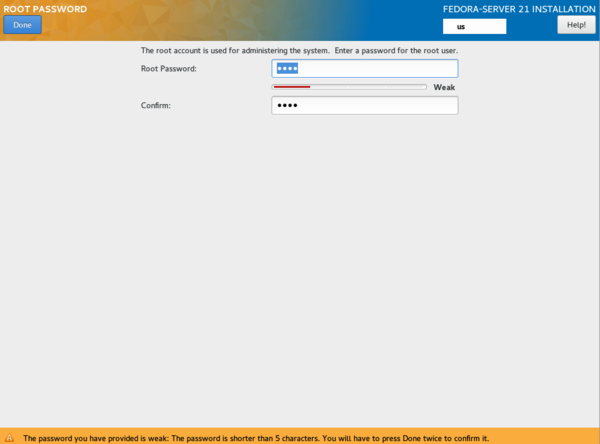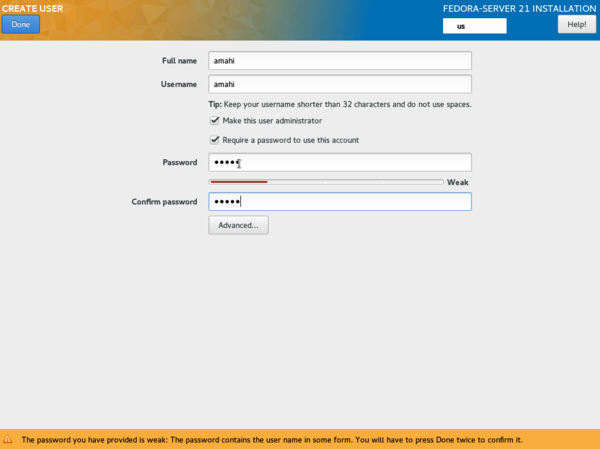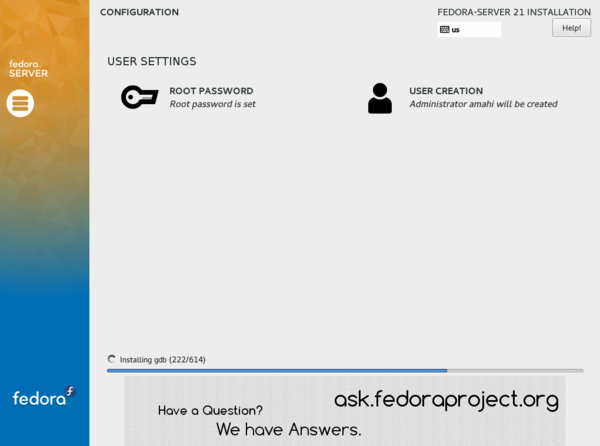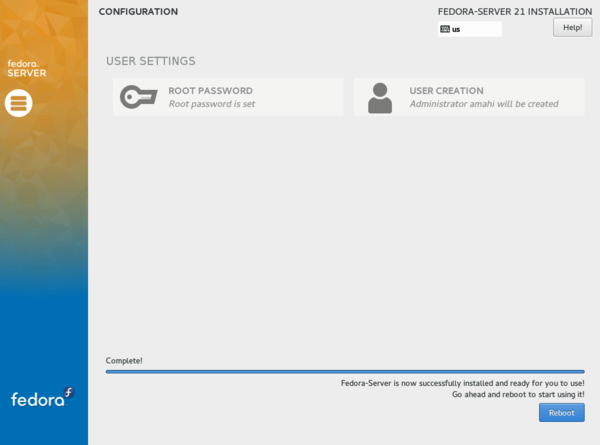Amahi 8 Install
Contents
NOTES:
- The only Officially Supported install media is Fedora 21 Server DVD.
- Ensure your system meets the minimum requirements for Amahi before proceeding.
- 32-bit installs ARE NOT available nor supported in Amahi 8.
- You must install Fedora 21 Server prior to installing Amahi.
- Currently there IS NO Express Disc available.
- If you have problems, seek assistance in the Amahi Forums or LIVE support on the Amahi IRC channel.
Download the Fedora DVD
First, download the Fedora 21 Server DVD for 64 bit (1.91GB), preferably using torrents
- Torrents:
- Primary: Fedora 21 Server 64-bit (torrent)
- Alternate: Fedora 21 Server 64-bit (torrent)
- Direct http download:
- Primary: Fedora 21 Server 64-bit (http)
- Alternate: Fedora 21 Server 64-bit (http)
Burn ISO to DVD or you may use UNetbootin (supports Windows/Linux/Mac OS]) for USB.
Install
Fedora
- Boot the Fedora 21 Server DVD and select Install Fedora-Server 21
- Choose desired language and select Continue
- The INSTALLATION SUMMARY screen will appear. It may take a few minutes to finish Checking software dependencies
- Once complete, next choose INSTALLATION DESTINATION. This is where you will select the disk drive to use.
- Choose the disk drive you want to use for the Fedora installation. If you have more than one disk drive connected, DO NOT select them at this time.
- You will notice a check mark on the disk drive selected. Select I will configure partitioning and then choose Continue.
- Ensure the New mount points will use the following partitioning scheme: is changed to reflect Standard partition. Then select Click here to create them automatically.
- The disk drive partition should look similar to this setup. For most users, then default partitioning scheme used will suffice. However, you can manually change it using the hard drive partition scheme documentation as a guide. Once complete, choose Done
- You will now see SUMMARY OF CHANGES to the disk drive. Choose Accept Changes
- Back to the INSTALLATION SUMMARY and ready to begin installation. Select Begin Installation
- Installation has begun, but we need to configure the users. Although not mandatory, recommend you set the root password.
- Enter the desired password and choose Done. You may have to select Done twice if your password is weak.
- Create the initial user and password. Ensure you select Make this user administrator check box. Once complete, choose Done. Just as in the previous step, a weak password may require you to select Done twice.
- Now all of the configuration steps are complete. Sit back and watch the progress.
- Installation is complete. Choose Reboot and remove the installation media.
- Upon reboot, login with the user created in the Fedora 21 installation and become root for the Amahi installation
sudo su -
Amahi 8
Next, install Amahi 8 proper on top of Fedora 21.
You need to obtain an install code (denoted YOUR-INSTALL-CODE below) from the Amahi control panel after configuring a profile for the system you are installing, with proper network configuration for your network.
After that, type these commands in the console:
rpm -Uvh http://f21.amahi.org/noarch/hda-release-6.9.0-1.noarch.rpm yum -y install mariadb-libs mariadb-server yum -y install hda-ctl hda-platform hda-install YOUR-INSTALL-CODE
What this does is this: Installs the Amahi F21 repo, gets the mariadb base packages to avoid dependency conflicts, and installs base Amahi packages (that part should install several packages).
If there are no errors, install Amahi (replace YOUR-INSTALL-CODE above with install code from the your Amahi control panel).
If all goes well, it should tell you to reboot!
Once it comes back, you should have a fully functional home server. Next you need to transition your network to use it!
Transitioning to your Amahi server
- It will boot with the static IP you pre-configured in the Amahi control panel
- You can verify if the dashboard is available by accessing from any client using the IP address of your server http://IPADDRESS/ or http://hda/ (in some windows clients)
- It's strongly recommended that you turn off the previous DHCP server and let Amahi handle DHCP so that DNS falls into place
- Reboot all the clients (or turn off network and turn it back on) to get them to use DHCP leases from your Amahi server
- The first time it will initialize, ask you to login, and enter a dashboard password for the admin user created earlier
- Once you reach your dashboard, you should create shares as needed, add more drives, install apps, etc., etc.
- Optionally refer to Greyhole to install/configure storage pooling.
